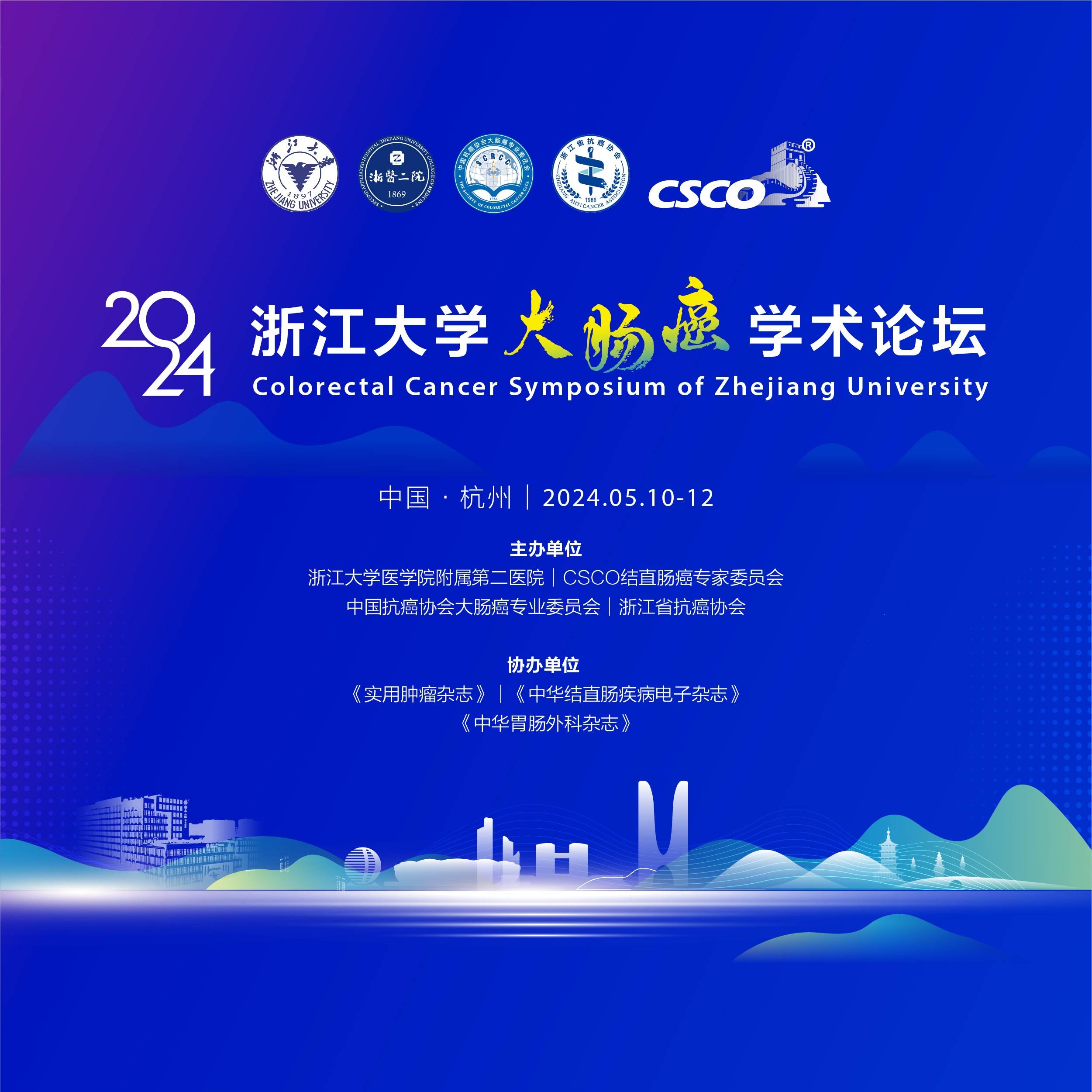作者:Maja V. Maraldo, University of Copenhagen, Copenhagen, Denmark
Andrea K. Ng, Dana-Farber Cancer Institute and Brigham and Women’s Hospital, Harvard Medical School, Boston, MA
50年前,Dollinger等1首次以病例报告的形式报道了霍奇金淋巴瘤的胸部放疗和心血管并发症之间的联系;斯坦福大学Hancock等2,3学者随后证实心血管疾病发病风险高低与纵隔受照剂量相关。此后,陆续有数项类似研究发表4-7,这些研究通过对儿童时期癌症患者及乳腺癌患者的长期随访发现,纵隔放疗时的心脏受照剂量与远期心血管疾病的患病率及死亡率相关。在这些研究中,心脏受照剂量的估算方法各不相同,有的以纵隔处方剂量粗略判断2,3,5,有的研究取心脏不同受照点的平均剂量6,有的测量模体中心脏散射剂量4,有的通过在标准体型患者身上进行放疗计划模拟来估算心脏受照剂量7。在针对霍奇金淋巴瘤治疗后长期存活者的研究领域里,学者Van Nimwegen等8发表了一篇具有重要的、独特贡献的论文,这篇论文在本篇评论中亦被引用。Van Nimwegen研究的对象是成年霍奇金淋巴瘤患者,他们通过心脏勾画,模拟X线照射的治疗计划,计算心脏的评价受照剂量,这种以现代CT成像技术为基础学的剂量计算方法被证实是估算心脏受量的有效方法9。Van Nimwegen的研究首次阐明HL患者接受纵隔放疗后的长期存活者的冠心病发病风险与心脏平均受照剂量之间存在线性、无阈值对应性的相关性,而不是倍数的量效关系。这个研究结果可以为正在接受放疗的HL患者提供明确的冠心病风险高低评估,帮助制定后续随访策略,并帮助优化HL的放疗计划。不仅如此,Van Nimwegen研究证实的量效关系为预测霍奇金淋巴瘤患者、特别是成年患者的在当代放疗技术下的心脏疾病风险方面的放射生物学研究方面提供了额外的重要数据。
放疗在霍奇金淋巴瘤治疗中的作用颇有争议10-15。最新数据显示,在早期的霍奇金淋巴瘤的治疗中,不行放疗则会导致疾病控制率和生存率下降10-12。对于需要接受纵隔放疗的霍奇金淋巴瘤患者,在获得合理疾病控制的前提下,可通过尽量降低心脏受照剂量降低冠心病发病风险,Van Nimwegen8的研究为此治疗理念提供了进一步的数据支持。在这个研究中,半数以上患者的心脏平均受照剂量高于20Gy,和既往霍奇金淋巴瘤的放疗历史相符。然而在如今放疗技术下,心脏受照剂量不会如此高,现代放疗技术可以控制HL患者纵隔放疗的心脏受照剂量在个位数以下,甚至低于5Gy16-21。放疗计划设计中,降低危及器官受照剂量的三种主要方法为降低照射剂量、减少受照体积和优化放疗计划设计及技术。
对于早期HL患者及根据GHSG标准判断的低危HL患者,GHSG HD10研究表明,如果患者接受两个周期的阿霉素、博来霉素、长春新碱和氮烯唑胺(ABVD方案)化疗后,放疗剂量可以从30Gy减至20Gy22。尽管GHSG HD11试验并没有支持进行ABVD化疗后的高危患者减少放疗剂量至20Gy23,但也有一些临床试验数据显示,部分合并有高危因素的早期HL患者如果化疗后PET检查提示完全缓解后,20~24Gy的放疗剂量亦可获得良好的长期照射野内疾病控制率24。这些研究结果支持可降低高危早期HL患者的纵隔放疗剂量,特别是针对一些因合并心肺疾病而无法耐受高剂量照射的患者。
第二个减少放疗受照剂量的方法是减少受照体积。更有效的全身治疗、现代影像学分期和再分期评估、以CT模拟为基础的放疗计划设计,使得淋巴瘤的放疗靶区从扩大野照射(EFRT)、斗篷野、累及野(IFRT)发展到单纯累及淋巴结及累及部位照射(INRT/ISRT)。直到上个世纪80年末90年初,EFRT仍常规用于霍奇金淋巴瘤放疗。EFRT要求包括邻近淋巴引流区,不可避免导致心脏受照剂量偏高,尤其是在斗篷野与膈下野衔接部位,心脏受照剂量可比处方剂量高出50%25,这与后续的冠心病发病增加明显相关。虽然更改扩大野照射为斗篷野照射有助于控制心脏受照剂量,但标准的斗篷野照射仍然不能从根本上上降低心脏受照剂量。针对早期HL患者纵隔放疗的剂量学分析表明,斗篷野照射的心脏平均受照剂量为27.5Gy,而累及野照射就(INRT)仅为7.7Gy26。INRT照射后,预估的25年心脏疾病绝对发病风险可以从9.1%降至1.4%26,心血管疾病死亡率可以从2.1%降至1%27。针对IFRT和INRT的剂量学分析表明17,28,INRT的心脏平均受照剂量下降接近50%。
最后一个方法是运用现代放疗技术降低危及器官受照体积。经验性的EFRT、斗篷野放疗、IFRT都基于X线平片上的骨性标志的二维计划设计,不可避免地导致照射大量正常组织。而现阶段标准化的ISRT/INRT是基于CT图像的放疗计划,靶区勾画及正常组织保护更为准确。与三维适形放疗相比,调强放疗IMRT和质子放疗等放疗新技术进一步降低了器官的受照剂量。大量的剂量学比较研究已经证实IMRT在心脏保护方面明显优于3D-CRT技术17,18,28-32,尽管这种改善不能一并概论16,33,但充分说明针对不同患者进行个体化放疗的重要性34。学者Hoppe35总结纵隔HL患者的质子放疗II期临床研究的部分数据显示,INRT的质子放疗不仅仅在心脏保护方面有优势36,对于乳腺、肺等周围正常组织同样具有很好的剂量学优势。尽管目前质子放疗还未普及,但越来越多的质子放疗疗效数据的呈现37,质子放疗的普及还是有可能的。此外,还有多项研究表明简单的患者训练如深呼吸门控技术,可帮助降低纵隔放疗时的心肺受照剂量21,38,39,从而降低放疗所带来的对患者经后数十年的生活质量影响19。
各种抗肿瘤治疗都是伴有一定风险的。从VanNimwegen8研究中,我们可以看到,虽然没有能够明确冠心病发病风险为零的阈值受照剂量,但冠心病的发病风险是随着心脏平均照射剂量增加而增加的。因此,我们的治疗目标是在不使疾病控制率受损的前提下,尽量减少照射剂量。应用ISRT/INRT照射方式治疗HL患者时,心脏受照剂量是根据病灶的不同部位因人而异的。对于病变位于上纵膈的患者,心脏平均受照剂量可以控制在5Gy以下。学者Chera16比较了不同HL患者是照射计划发现,如果病灶全部位于肺门以上,心脏平均受照剂量可以很好地控制在3Gy以下;全身化疗后进一步降低处方剂量或辅以呼吸门控技术时,心脏平均受照剂量甚至可以更低。因此,对于病变局限于上纵隔的患者,放疗的远期副反应风险较低,放化疗的综合治疗与单纯化疗相比具有优势,因为疾病控制率高且可避免多疗程化疗的毒副反应。然而,对于一个病变恰好位于左心室后方且非大肿块的纵隔HL患者,如果PET证实ABVD化疗后完全缓解,巩固性放疗的毒性可能会抵消其治疗的获益40。而对于大肿块的早期HL患者,标准治疗方法仍然是化疗及放疗的综合治疗13,14,41。基于此原因,大多数临床研究在探索是否可以不进行放疗时,均排除了大肿块的HL患者。对于合并大肿块的HL患者,由于病变范围广,即使心脏平均受量高、远期冠心病风险大,仍然需要考虑放疗,这是因为大肿块的疾病控制获益最大化来源于放化疗的联合治疗模式。
心脏平均受照剂量是直观方便的剂量学参考因素,但心脏平均受照剂量相同的不同治疗计划可能有不同的冠心病发病风险,这取决于左室降支或瓣膜等重要结构有多少受到照射。如果冠心病风险是通过对患者的回顾性分析心脏受照剂量来评估的,由于难以判断有多少重要结构受到照射,最终难以建立明确的量效关系。然而,在现代放疗技术背景下,通过造影剂显影的三维CT模拟计划系统,我们可以准确判断并收集患者心脏重要结构的受照剂量体积等数据。未来的研究可以详细的收集患者的3D-CRT放疗计划,及其远期并发冠心病的情况和心脏重要结构受照剂量体积数据,为经后纵隔放疗的计划制定提供更具体、更有临床实际意义的器官剂量学参数。不仅如此,我们应当在计划设计时,跳出单纯的剂量学比较,而着眼于提供预判心脏病风险的个体化研究。个体化的心脏病风险评估,可帮助实现个体化的心脏病筛查策略,其中包括疾病类型、时间、保护因素及相应预防策略等。就如心脏病的早期诊断及预防策略一样,我们期望将来的研究能够把HL患者放疗策略的调整以及心脏并发症的预防和筛查措施等,转化为HL长期存活者的心脏病相关死亡率的降低。
AUTHORS’ DISCLOSURES OF POTENTIAL CONFLICTSOF INTEREST
Disclosures provided by the authors are available with this article at www.jco.org.
AUTHOR CONTRIBUTIONS
Manuscript writing: All authors
Final approval of manuscript: All authors
REFERENCES
1. Dollinger MR, Lavine DM, Foye LV,Jr: Myocardial infarction due to post irradiation fibrosis of the coronaryarteries. Case of successfully treated Hodgkin’s disease with lower esophageal involvement. JAMA 195:316-319, 1966
2. Hancock SL, Tucker MA, Hoppe RT: Factors affecting late mortality from heart disease after treatment of Hodgkin’s disease. JAMA 270:1949-1955, 1993
3. Hancock SL, Donaldson SS, Hoppe RT: Cardiac disease following treatment of Hodgkin’s disease in children and adolescents. J Clin Oncol 11:1208-1215, 1993
4. Mulrooney DA, Yeazel MW, KawashimaT, et al: Cardiac outcomes in a cohort of adult survivors of childhood and adolescent cancer: Retrospective analysis of the Childhood Cancer Survivor Study cohort. BMJ 339:b4606, 2009
5. Schellong G, Riepenhausen M, BruchC, et al: Late valvular and other cardiac diseases after different doses of mediastinal radiotherapy for Hodgkin disease in children and adolescents: Report from the longitudinal GPOH follow-up project of the German-Austrian DAL-HD studies. Pediatr Blood Cancer 55:1145-1152, 2010
6. Tukenova M, Guibout C, Oberlin O,et al: Role of cancer treatment in long term overall and cardiovascular mortality after childhood cancer. J Clin Oncol 28:1308-1315, 2010
7. Darby SC, Ewertz M, McGale P, etal: Risk of ischemic heart disease in women after radiotherapy for breast cancer. N Engl J Med 368:987-998, 2013
8. van Nimwegen FA, Schaapveld M,Cutter DJ, et al: Radiation doseresponse relationship for risk of coronary heart disease in survivors of Hodgkin lymphoma. J Clin Oncol 34:235-243, 2016
9. van Nimwegen FA, Cutter DJ, Schaapveld M, et al: Simple method to estimate mean heart dose from Hodgkin lymphoma radiation therapy according to simulation x-rays. Int J Radiat Oncol Biol Phys 92:153-160, 2015
10. Olszewski AJ, Shrestha R, Castillo JJ: Treatment selection and outcomes in early-stage classical Hodgkin lymphoma: Analysis of the National Cancer Data Base. J Clin Oncol 33:625-633, 2015
11. Parikh RR, Grossbard ML, Harrison LB, et al: Early-stage classic Hodgkin lymphoma: The utilization of radiation therapy and its impact on overall survival. Int J Radiat Oncol Biol Phys 93:684-693, 2015
12. Raemaekers JM, Andre MP, FedericoM, et al: Omitting radiotherapy in early positron emission tomography-negative stage I/II Hodgkin lymphoma is associated with an increased risk of earlyrelapse: Clinical results of the preplanned interim analysis of the randomized EORTC/LYSA/FIL H10 trial. J Clin Oncol 32:1188-1194, 2014
13. Meyer RM, Gospodarowicz MK,Connors JM, et al: NCIC Clinical Trials Group; Eastern Cooperative Oncology Group: ABVD alone versus radiation-based therapy in limited-stage Hodgkin’slymphoma. N Engl J Med 366:399-408, 2012
14. Radford J, Illidge T, Counsell N,et al: Results of a trial of PET-directed therapy for early-stage Hodgkin’slymphoma. N Engl J Med 372:1598-1607, 2015
15. Longo DL, Armitage JO: Controversies in the treatment of early-stage Hodgkin’s lymphoma. N Engl J Med 372:1667-1669, 2015
16. Chera BS, Rodriguez C, Morris CG,et al: Dosimetric comparison of three different involved nodal irradiation techniques for stage II Hodgkin’s lymphomapatients: Conventional radiotherapy, intensity-modulated radiotherapy, and three dimensional proton radiotherapy. Int J Radiat Oncol Biol Phys 75:1173-1180, 2009
17. Campbell BA, Hornby C, Cunninghame J, et al: Minimising critical organ irradiation in limited stage Hodgkin lymphoma: A dosimetric study of the benefit of involved node radiotherapy. Ann Oncol 23:1259-1266, 2012
18. Fiandra C, Filippi AR, Catuzzo P,et al: Different IMRT solutions vs. 3D conformal radiotherapy in early stage Hodgkin’s Lymphoma: Dosimetric comparison and clinical considerations. RadiatOncol 7:186, 2012
19. Aznar MC, Maraldo MV, Schut DA, et al: Minimizing late effects for patients with mediastinal Hodgkin lymphoma: Deep inspiration breath-hold, IMRT, or both? Int J Radiat Oncol Biol Phys 92:169-174, 2015
20. Paumier A, Ghalibafian M, Beaudre A, et al: Involved-node radiotherapy and modern radiation treatment techniquesin patients with Hodgkin lymphoma. Int J Radiat Oncol Biol Phys 80:199-205,2011
21. Petersen PM, Aznar MC, Berthelsen AK, et al: Prospective phase II trial of image-guided radiotherapy in Hodgkin lymphoma: Benefit of deep inspiration breath-hold. Acta Oncol 54:60-66, 2015
22. Engert A, Plutschow A, Eich HT, et al: Reduced treatment intensity in patients with early-stage Hodgkin’s lymphoma. N Engl J Med 363:640-652, 2010
23. Eich HT, Diehl V, Go¨ rgen H, et al: Intensified chemotherapy and dosereduced involved-field radiotherapy inpatients with early unfavorable Hodgkin’s lymphoma: Final analysis of theGerman Hodgkin Study Group HD11 trial. J Clin Oncol 28:4199-4206, 2010
24. Torok JA, Wu Y, Prosnitz LR, etal: Low-dose consolidation radiation therapy for early stage unfavorable Hodgkin lymphoma. Int J Radiat Oncol Biol Phys 92: 54-59, 2015
25. Hull MC, Morris CG, Pepine CJ, etal: Valvular dysfunction and carotid, subclavian, and coronary artery diseasein survivors of Hodgkin lymphoma treated with radiation therapy. JAMA 290:2831-2837, 2003
26. Maraldo MV, Brodin NP, VogeliusIR, et al: Risk of developing cardiovascular disease after involved node radiotherapy versus mantle field for Hodgkin lymphoma. Int J Radiat Oncol Biol Phys 83:1232-1237, 2012
27. Maraldo MV, Brodin NP, Aznar MC,et al: Estimated risk of cardiovascular disease and secondary cancers with modern highly conformal radiotherapy for early-stage mediastinal Hodgkin lymphoma. Ann Oncol 24:2113-2118, 2013
28. Koeck J, Abo-Madyan Y, Lohr F, etal: Radiotherapy for early mediastinal Hodgkin lymphoma according to the German Hodgkin Study Group (GHSG): The roles of intensity-modulated radiotherapy and involved-node radiotherapy. Int J Radiat Oncol Biol Phys 83:268-276, 2012
29. Antoni D, Natarajan-Ame S, Meyer P, et al: Contribution of three-dimensional conformal intensity-modulated radiation therapy for women affected by bulky stage II supradiaphragmatic Hodgkin disease. Radiat Oncol 8:112, 2013
30. Dabaja BS, Rebueno NC, Mazloom A, et al: Radiation for Hodgkin’s lymphoma in young female patients: A new technique to avoid the breasts and decrease the dose to the heart. Int J Radiat Oncol Biol Phys 79:503-507, 2011
31. Girinsky T, Pichenot C, Beaudre A, et al: Is intensity-modulated radiotherapy better than conventional radiationtreatment and three-dimensional conformal radiotherapy for mediastinal massesin patients with Hodgkin’s disease, and is there a role for beam orientation optimization and dose constraints assigned to virtual volumes? Int J Radiat Oncol Biol Phys 64:218-226, 2006
32. Goodman KA, Toner S, Hunt M, etal: Intensity-modulated radiotherapy for lymphoma involving the mediastinum. Int J Radiat Oncol Biol Phys 62:198-206, 2005
33. De Sanctis V, Bolzan C, D’Arienzo M, et al: Intensity modulated radiotherapy in early stage Hodgkinlymphoma patients: Is it better than three dimensional conformal radiotherapy? Radiat Oncol 7:129, 2012
34. Maraldo MV, Specht L: A decade ofcomparative dose planning studies for early-stage Hodgkin lymphoma: What can welearn? Int J Radiat Oncol Biol Phys 90:1126-1135, 2014
35. Hoppe BS, Flampouri S, Su Z, et al: Consolidative involved-node proton therapy for Stage IA-IIIB mediastinal Hodgkin lymphoma: Preliminary dosimetric outcomes from a phase II study. Int J Radiat Oncol Biol Phys 83:260-267, 2012
36. Hoppe BS, Flampouri S, Su Z, et al: Effective dose reduction to cardiac structures using protons compared with 3DCRT and IMRT in mediastinal Hodgkin lymphoma. Int J Radiat Oncol Biol Phys 84:449-455, 2012
37. Hoppe BS, Flampouri S, Zaiden R, et al: Involved-node proton therapy in combined modality therapy for Hodgkin lymphoma: Results of a phase 2 study. Int J Radiat Oncol Biol Phys 89:1053-1059, 2014
38. Paumier A, Ghalibafian M, Gilmore J, et al: Dosimetric benefits of intensitymodulated radiotherapy combined with the deep-inspiration breath-hold technique in patients with mediastinal Hodgkin’s lymphoma. Int J Radiat Oncol Biol Phys 82:1522-1527, 2012
39. Charpentier AM, Conrad T, Sykes J,et al: Active breathing control for patients receiving mediastinal radiation therapy for lymphoma: Impact on normal tissue dose. Pract Radiat Oncol4:174-180, 2014
40. NCCN Clinical Practice Guidelinesin Oncology: Hodgkin lymphoma.http://www.nccn.org/professionals/physician_gls/PDF/hodgkins.pdf
41. Straus DJ, Portlock CS, Qin J, etal: Results of a prospective randomized clinical trial of doxorubicin, bleomycin, vinblastine, and dacarbazine (ABVD) followed by radiation therapy(RT) versus ABVD alone for stages I, II, and IIIA nonbulky Hodgkin disease. Blood 104:3483-3489, 2004
DOI: 10.1200/JCO.2015.64.6588; published online ahead of print at www.jco.org on November 30, 2015.
欲了解更多血液肿瘤、淋巴瘤相关资讯,与全国各地血液肿瘤、淋巴瘤医生交流与讨论,请扫描以下二维码,添加肿瘤资讯小助手-Dinna微信,备注“血液肿瘤”!
(本刊负责人:黄慧强;审校:孙鹏;翻译:邱红,华中科技大学附属同济医院)
来源:JCO肿瘤论坛
















 苏公网安备 32059002004080号
苏公网安备 32059002004080号


